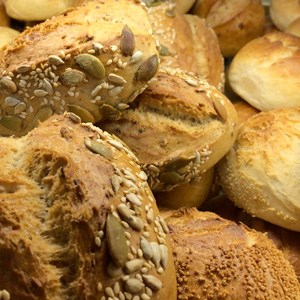Human gut microbiota consists of billions of microbes, mainly bacteria, that constantly interact with the host, humans. Gut microbiota composition, i.e. which microbes live in the gut, differs between humans. Most gut bacteria inhabit the large bowel and use food not absorbed by the host as their energy source.
Dietary fibers are complex carbohydrates that humans cannot absorb. In gut fermentation, bacteria break down dietary fiber for energy, which produces short-chain fatty acids (SCFA), most importantly acetate, propionate, and butyrate. SCFAs are interesting molecules that can affect physiology in many ways, for example, the immune system and hormonal regulation.
Only certain bacteria can break down specific fiber structures
Earlier studies have shown that different fiber structures affect the fermentation and levels of produced SCFAs. Moreover, gut microbiota composition can affect the fermentation process because only certain bacteria can break down specific fiber structures and produce certain SCFA. These findings have been demonstrated with isolated fibers, but fiber-rich foods often contain several different fibers, which might affect fermentation.
This study, published in Scientific Reports in January 2023, aimed to investigate the effect of two different fecal microbial compositions on the fermentation of a standardized amount of oat, rye, and wheat breads. Rye and oats have different fiber structures and complete food products, as bread contains different fibers.
Different gut microbiota were used
In this study, two human fecal donors with different gut microbiota compositions were recruited. The bread samples were digested enzymatically to remove nutrients that are digested before the large bowel. A fermentation model was used to study SCFA production, dietary fiber breakdown, pH, and changes in microbiota composition for 24 hours.
Microbiota composition of the samples changed during fermentation experiments and differed between the breads, especially in the samples from the donor with a high abundance of the bacterial genera Prevotella and Subdoligranulum (donor II).
Fiber breakdown differed
SCFA levels were low in the samples with fecal microbiota from donor I after 8 h of fermentation, but after 24 h, acetate and propionate levels were similar in the samples from the different donors. Butyrate levels were higher in the fermentation samples from donor II, especially with rye substrate, where a high abundance of Subdoligranulum was observed. Dietary fiber breakdown was also higher in the fermentation samples from donor II.
In conclusion, fermentation and breakdown of fiber differed between the two different microbiota compositions. The study demonstrated that the effects of different fiber structures and different microbiota compositions on fermentation are also valid for complete food products containing different fibers. In the future, these and similar results could lead to more personalized dietary recommendations and products.

